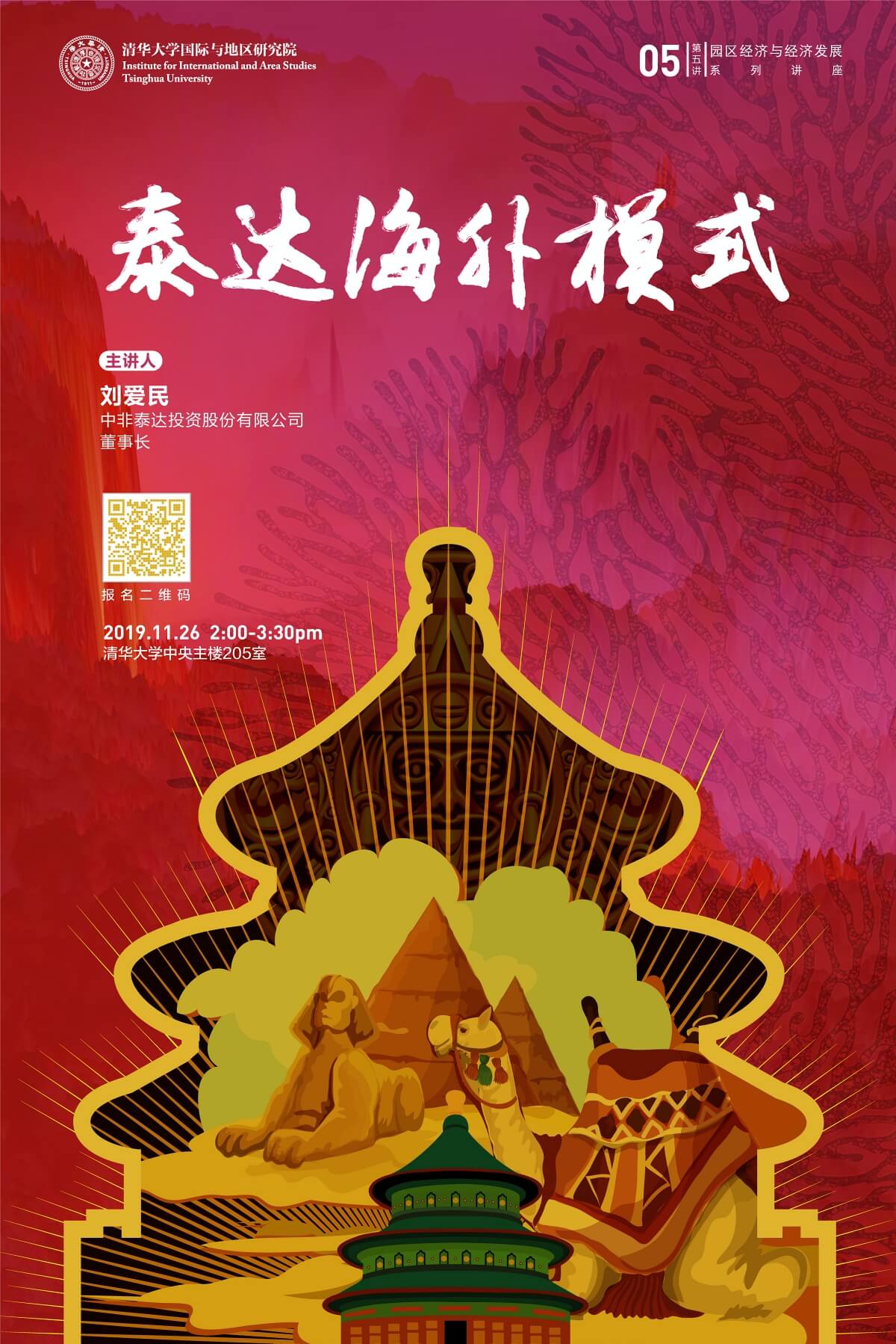
On the afternoon of November 26, 2019, the 5th session of the Park Economy and Economic Development Lecture Series titled the “Exploration and Practice of Overseas Industrial Park Development” was held at Conference Room 205 of the Central Main Building of Tsinghua University. Mr. Liu Aimin, Chairman of China-Africa TEDA Investment Co., Ltd. delivered the speech, which was hosted by Prof. Wang Yong, Associate Professor, Institute of Economics, School of Social Sciences, Tsinghua University, and attended by doctoral students from the Institute of International and Area Studies (IIAS) of Tsinghua University.
Mr. Liu introduced the situation of overseas parks by exploring the rules of park development and analyzing park development models. He started with the status quo and main types of overseas economic and trade cooperation zones and pointed out that economic and trade cooperation zones have played a very important role in promoting the industrialization process of the host country. It can increase employment and tax revenue, expand exports, generate foreign exchange, promote China’s global industrial layout, create space for economic structural changes, and provide more economical and reliable bases of overseas development, which helps to form an industrial chain and industrial clusters close to the market, and reduce the costs of overseas investments and operations of enterprises. Overseas economic and trade cooperation zones can serve as a vehicle to promote the RMB internationalization. When conducting top-level design of cooperation zone projects with the host country, it will increase the RMB reserves in the central bank of the host country. Through the construction of cooperation zones, the host countries have learned about China’s opening-up and development policies, which are increasingly recognized by these countries. Around 2000, Chinese enterprises with overseas operations continued to increase, and Chinese trading companies entered a stage of fierce competition. In 2009, 19 overseas economic and trade cooperation zones passed the assessment and certification of the Ministry of Commerce and the Ministry of Finance and formally became national-level overseas economic and trade cooperation zones. As part of the “national team”, overseas economic and trade cooperation zones have become an important component of the “Belt and Road” strategy.
When talking about the development rules of parks, Mr. Liu pointed out that the development of parks should conform to the process of national industrialization. He cited that the construction of the “Belt and Road”initiative can not only fundamentally guarantee China’s energy security, but also promote China’s new landscape of all-round opening up. The host countries can also improve their level of industrialization, expand export earnings and promote local economic development. China upholds the spirit of peaceful cooperation, openness, inclusiveness, mutual learning and mutual benefit, and combines China’s development with that of countries along the B&R to provide the world with a solution for common prosperity and development.
Later, Mr. Liu introduced the case of a B&R overseas park, China-Egypt TEDA Suez Economic and Trade Cooperation Zone, and further explained the development model of the park by elaborating its stages of setup, startup, growth and upgrade. He highlighted that the industrial agglomeration of the cooperation zone is high, and the hub-and-spoke effect is obvious. It covers the businesses of new building materials, petroleum equipment, high and low voltage equipment and machinery manufacturing industries. He specifically mentioned the construction and development of the cooperation zone in terms of industrial investment, living facilities, leisure and entertainment facilities, enterprise supporting services, basic property services and other aspects, which showed a vivid picture of the park.
At the end of the lecture, students enthusiastically asked questions.Based on TEDA’s development, Mr. Liu concluded that in the global market competition, the image is the brand and the productivity. The overseas image of Chinese companies represents not only their own images, but also that of the nation and the country. Therefore, it is important to unswervingly build world-class enterprises with global competitiveness, and shape and enhance the overseas image of Chinese enterprises. While expanding overseas markets, Chinese enterprises must also serve as the friends and ambassadors to promote openness, inclusiveness and win-win cooperation.





